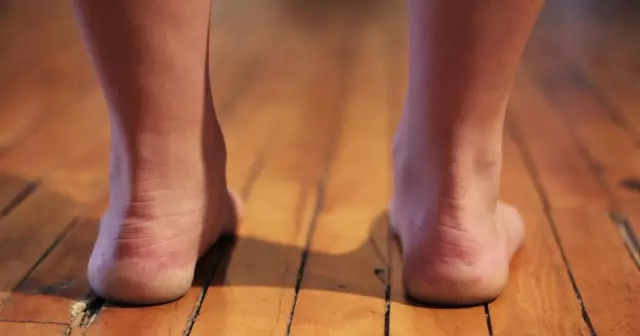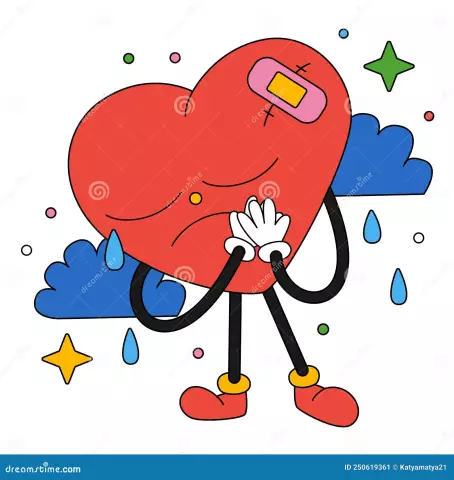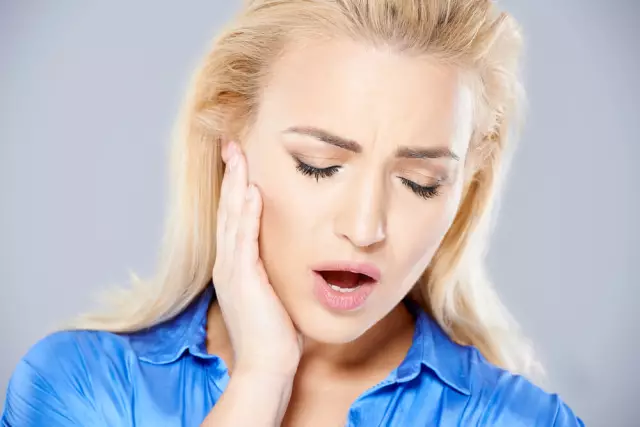- Author Rachel Wainwright [email protected].
- Public 2023-12-15 07:39.
- Last modified 2025-11-02 20:14.
What to do when your heel hurts

The heel, like the rest of the foot, acts as a shock absorber. The heel bone is the largest bone in the foot. Together with the soft fat layer, it can withstand enormous loads when running and walking. It is through the heel that many nerves and blood vessels pass to other parts of the foot, which is why it is very sensitive to injury and disease.
Any painful sensations in the legs can greatly ruin life, because each step is difficult and the overall vitality drops sharply. It is very important to find out why the heels hurt in order to return the ease of gait as soon as possible.
Heels hurt, reasons
Painful sensations in the heels can appear due to many factors. First of all, this is constant overstrain and overload of the foot, which lead to pain. Most often, the reason is the wrong shoes, especially for women who regularly wear high-heeled shoes. Also, shoes with unusually low heels, a sharp increase in physical activity or prolonged stay on feet can lead to this.
There are various medical conditions that can cause heels to hurt, including:
- Arthritis - This inflames the tissue that runs along the foot and connects the toes to the heel bone. The painful sensations intensify gradually, and the heels hurt especially strongly in the morning;
- Plantar fasciitis. The sole fascia is a dense formation located in the connective tissue that runs along the entire sole of the foot. Regularly wearing tight shoes or standing on your feet can lead to inflammation of the fascia. In addition to pain, plantar fasciitis causes the deposition of salts at the site of inflammation, which provokes the formation of a heel spur;
- Heel spur is a chronic form of heel fasciitis, in which the deposition of calcium salts under the skin leads to the formation of a kind of growth. It presses on the surrounding tissue, causing the heel to hurt when walking. The pain is most intense in the morning after sleep, during the day it subsides a little, but it can return and intensify again;
- Any injury to the tendon, straining or tearing, can also lead to sharp burning pains just under the heel, which are especially felt when walking or exercising;
- Reactive arthritis - sometimes the heels hurt due to the development of infectious processes in the body, most often chlamydia and other sexually transmitted diseases. Latent infection provokes reactive inflammation of the heel tendon, resulting in constant pain that worsens at night;
- Certain other conditions, such as gout.
These diseases do not go away on their own, therefore, when the heel hurts when walking, you should consult a doctor, traumatologist or rheumatologist. The heel is a very vulnerable part of the body and it usually takes weeks and months to heal. Regardless of the diagnosis, to completely get rid of discomfort while driving, you must be patient and follow the doctor's recommendations exactly.
How to get rid of heel pain in the morning
If your heel hurts in the morning, there are several methods that can help you cope with severe soreness in the heels that appear at the very beginning of the day:
- Cold treatment - to relieve pain, you can massage the heel with an ice cube for 5-7 minutes, until numbness. This procedure should be repeated 3-4 times throughout the day. In addition, it is effective to alternate cold with warmth. To do this, first apply ice to the sore heel for 15 minutes, then take a break for 15 minutes. and end the procedure by applying a hot heating pad for another 15 minutes;
- Pain relievers - Nonsteroidal anti-inflammatory drugs such as Ibuprofen are effective for treating any inflammatory disease, including those that cause heel pain when stepped on.
- Using a heel pad - You can reduce pain by distributing the load more evenly on the heel. To do this, it is recommended to use special liners that are inserted into the shoes and raise this part of the body by 3-6 mm, which slightly reduces the load on the transition zone between the sole and the heel.
How to avoid heel pain
To prevent the development of serious problems, you should carefully monitor your health. So, extra pounds are not only harmful to the whole body, they increase the load on the heels, so it is important to maintain normal weight.
Wearing comfortable shoes with low heels (up to 5 cm) is the most important preventive measure for the occurrence of foot diseases. Often the heel hurts due to overstrain of the foot, and the low heel distributes the load evenly over its entire surface. If there are even minimal signs of flat feet, it is necessary to use special orthopedic insoles that support the muscles and ligaments of the foot, protecting the heel.

It is extremely useful, even for a perfectly healthy person, to regularly perform special therapeutic exercises to prevent leg diseases.
Heels hurt, gymnastics
There are several effective exercises to strengthen and heal your leg muscles, including your heels:
- Use your feet to roll a small ball, such as a tennis ball. This exercise must be done daily a couple of times a day for a few minutes;
- Stretch and stretch your calves and feet. Massage, preferably at the end of the day, before bed;
- Stand facing the wall at arm's length from it. Rest your palms against the wall, take a step back with your right foot, and bend your left at the knee. Bend over to the wall and place your right heel on the floor to stretch your right calf muscles. After standing this way for 10 seconds, switch legs and repeat the exercise several times for each leg.
Regular exercise can help prevent heel pain when stepping. While doing them, increase the load gradually to avoid injury.
YouTube video related to the article:
Found a mistake in the text? Select it and press Ctrl + Enter.






